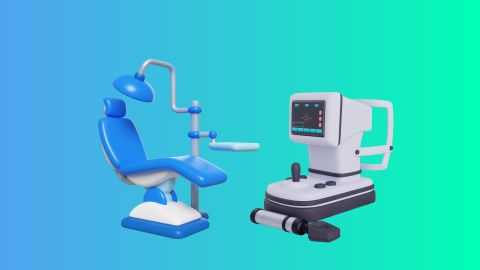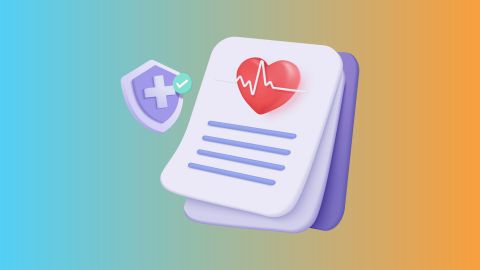If you're a medical professional specializing in post-operative care or physical rehabilitation, you’re likely familiar with Continuous Passive Motion (CPM) machines. These devices assist patients in regaining mobility by gently moving joints such as the knee, shoulder, or elbow, requiring no effort from the patient. They are particularly beneficial immediately after surgery, when active movement can be painful or unsafe. This guide will explain how CPM machines work, their optimal use cases, and the results they can deliver. We’ll also discuss machine types for different joints, key features to consider, current pricing in India, maintenance tips, and factors to weigh before purchasing. Whether you’re looking to equip your clinic or recommend one for home use, we’ll provide insights on making the right choice and exploring financing options.
What is a CPM machine?
A Continuous Passive Motion (CPM) machine is a therapeutic device used in physical rehabilitation to support joint recovery without requiring active effort from the patient. The machine moves a specific joint, such as the knee, shoulder, elbow, or hip in a slow, rhythmic motion within a set range.
Typically recommended after orthopaedic surgeries like joint replacements, ligament reconstructions, or fracture repairs, CPM machines help in maintaining joint mobility and preventing stiffness during recovery. This type of medical equipment plays a critical role in ensuring that the healing process does not compromise flexibility or joint function.
How does a CPM machine work?
CPM machines function by mechanically moving the affected joint through a controlled range of motion. This movement mimics natural joint activity and aids in maintaining flexibility without exerting pressure on muscles or ligaments.
- The patient places the limb (knee, arm, etc.) in a designated section of the CPM machine.
- The device is set to a specific range of motion based on medical advice.
- The machine initiates continuous flexion and extension movements of the joint.
- Motion parameters such as speed, duration, and angle can be adjusted according to recovery needs.
- The gradual progression in movement supports safe rehabilitation without causing strain or discomfort.
This passive movement reduces complications related to joint stiffness and helps improve blood circulation, contributing to a more efficient healing process. Check your eligibility for medical equipment finance to make rehabilitation easier and accessible
Uses of CPM Machine
Post-Surgical Rehabilitation: CPM machines help patients recover mobility after surgeries such as knee replacement, ACL repair, or shoulder surgery.
Improved Joint Mobility: They gently move joints without effort, promoting flexibility and preventing stiffness.
Pain Management: By ensuring smooth, continuous motion, these machines help reduce post-surgical pain.
Prevention of Scar Tissue: Continuous motion reduces the risk of excessive scar tissue formation in the joints.
Enhanced Circulation: CPM machines improve blood flow around the affected area, aiding healing and reducing swelling.
Passive Therapy for Injuries: They are useful for patients unable to perform active exercises due to injuries or limited strength.
Support for Physical Therapy: CPM devices complement traditional physical therapy by providing consistent motion and reducing strain on therapists.
Benefits of using a CPM machine
The use of CPM machines in rehabilitation offers numerous clinical and functional benefits. It is particularly effective during the early stages of recovery when active movement is limited.
- Promotes early mobility after surgery without patient exertion.
- Enhances joint flexibility and range of motion.
- Prevents joint stiffness and tissue adhesions.
- Reduces post-operative pain and swelling.
- Stimulates synovial fluid circulation, which nourishes cartilage.
- Supports better alignment and healing of tissues.
- Shortens rehabilitation time and improves overall outcomes.
- Minimises the risk of joint contractures and secondary complications.
These benefits make CPM machines a preferred choice in many post-surgical rehabilitation programmes. If you are considering financial support for medical equipment, check your eligibility for a loan today.
Types of CPM machines
CPM machines are available in various types, each designed to support specific joints and rehabilitation goals. Understanding the available options helps in choosing the most appropriate device for recovery needs.
- Knee CPM machine: Most commonly used, especially after total knee replacement or ligament surgeries.
- Shoulder CPM machine: Designed to support the complex range of shoulder movements after rotator cuff or joint repair.
- Elbow CPM machine: Useful for flexion and extension therapy after elbow fractures or ligament injuries.
- Hip CPM machine: Facilitates movement of the hip joint post-surgery or after muscle and ligament reconstruction.
- Ankle CPM machine: Ideal for recovery from tendon repair or injury to the ankle joint.
- Hand and wrist CPM machine: Offers fine-motion therapy for hand, wrist, or finger injuries, commonly used in plastic and reconstructive surgeries.
Each type of machine comes with specific design elements tailored to meet the anatomical and functional needs of the target joint.
Features of CPM machines
Modern CPM machines are equipped with features that enhance their usability, patient comfort, and therapeutic outcomes. These features vary across different models and should be considered while selecting the right equipment.
- Adjustable range of motion to suit patient recovery stages.
- Digital control panels or remote-controlled settings.
- Lightweight and foldable design for ease of transport.
- Timer functionality to set session duration.
- Variable speed control for movement adjustments.
- Soft, cushioned limb supports to reduce discomfort.
- Emergency stop mechanisms for safety.
- Pre-set therapy programmes based on joint type and therapy requirements.
Such features not only improve patient experience but also ensure precise and safe therapy delivery. Apply for medical equipment finance today to upgrade your healthcare setup with ease.
Precautions and safety tips for using CPM machine
Consult a Medical Professional: Always use a CPM machine under the guidance of a doctor or physical therapist to ensure safe and effective operation.
Proper Positioning: Ensure the patient’s joint is correctly aligned with the machine to avoid strain or injury.
Start with Low Settings: Begin with minimal range of motion and speed, gradually increasing as advised by the healthcare provider.
Monitor for Discomfort: Stop the machine immediately if the patient experiences pain or unusual discomfort and consult a professional.
Secure the Device Properly: Use straps and padding as needed to stabilize the joint and prevent slippage.
Limit Usage Time: Avoid overuse by following the recommended duration and frequency to prevent fatigue or irritation.
Price of CPM machine in India
The cost of CPM machines in India varies based on the type of machine, brand, features, and intended use (clinical or home care). Below is an indicative price range across various types:
S. No. |
Type of CPM Machine |
Approximate Price Range |
1 |
Knee CPM Machine |
Rs. 80,000 - Rs. 1.5 Lakh |
2 |
Hip CPM Machine |
Rs. 40,000 - Rs. 1.5 Lakh |
3 |
Elbow CPM Machine |
Rs. 80,000 - Rs. 2 Lakh |
4 |
Shoulder CPM Machine |
Rs. 1 Lakh - Rs. 2.5 Lakh |
5 |
Ankle CPM Machine |
Rs. 75,000 - Rs. 5.17 Lakh |
Prices may vary depending on the brand, specifications, and additional service packages such as extended warranties or home installation.
Factors to consider before purchasing a CPM machine
Choosing the right CPM machine requires evaluating several important aspects to ensure it aligns with both clinical requirements and patient comfort.
- Type of joint being treated and the machine’s compatibility.
- The adjustability of motion angles and speed.
- Ease of operation, especially for home users or elderly patients.
- Machine portability and storage convenience.
- Availability of spare parts and service support.
- Warranty terms and manufacturer reputation.
- Pricing in comparison to features offered.
- Availability of accessories or therapy modes for customisation.
It is also advisable to consult a physiotherapist or healthcare provider before making a purchase decision. Check your eligibility for medical equipment finance and get the right funding to support your purchase.
Maintenance tips for CPM machines
Regular maintenance ensures that the CPM machine functions efficiently and lasts longer. Proper care also reduces the likelihood of mechanical faults during therapy sessions.
- Wipe the machine daily with a dry or slightly damp cloth after use.
- Avoid exposure to moisture or harsh cleaning agents.
- Periodically check mechanical parts for signs of wear or looseness.
- Ensure cables, connectors, and remote controls are in good condition.
- Store the machine in a cool, dust-free environment when not in use.
- Lubricate moving parts if specified in the manufacturer’s manual.
- Schedule professional servicing periodically, especially for clinic-based machines.
- Follow the manufacturer's user guide for safety and longevity.
These maintenance practices help maintain both hygiene and functionality, ensuring continued safe use for patients.
Conclusion
CPM machines play a transformative role in rehabilitation, offering passive joint movement that aids in faster and more effective recovery. With various types available for different joints, these machines provide tailored solutions to meet individual therapy needs. Evaluating features, price, and service support ensures you choose the right equipment for your recovery journey.
CPM machine financing options with Bajaj Finserv
For those looking to make this investment easier, medical equipment finance offers a convenient solution to manage costs without compromising on quality or care. Understanding the medical equipment finance eligibility criteria can help streamline the application process and ensure faster access to necessary rehabilitation tools.
Additionally, being aware of the medical equipment finance interest rate structure allows buyers to plan their repayments more effectively, making long-term use of CPM machines more financially manageable.




